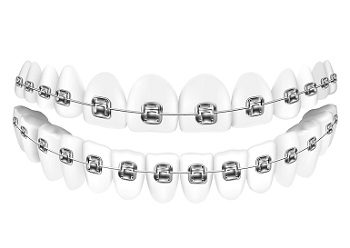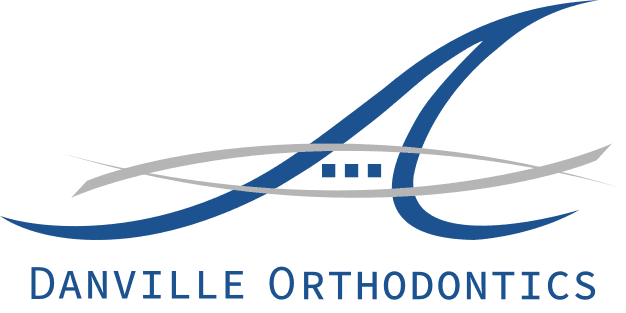What are power chain braces?
Braces are a form of an appliance that uses pressure to realign your teeth and jaw. They can aid in the prevention of gum disease, tooth decay, and jaw difficulties. Small brackets are attached to your teeth when you get braces. A wire is threaded between the brackets and attached to your back teeth. This wire is adjusted regularly to gradually shift your teeth and jaw into a new position. If you're thinking about getting braces or currently have them, you've probably heard of power chain braces. Your orthodontist uses a power chain to impart additional force.
Power Chain Braces
Power chains can be used in conjunction with braces to fulfill a range of treatment needs, including:
- Reducing gaps between teeth, such as those left by extractions
- Promotes even spacing between your teeth
- Align crooked teeth
- Corrects your dental midline
A power chain may link some of your teeth, while individual ligatures may join others. As a result, your orthodontist can address the specific treatment needs in various parts of your mouth.
Moreover, a power chain may link some of your teeth, while individual ligatures may join others. As a result, your orthodontist can address the specific treatment needs in various parts of your mouth.
Individual ligatures are weaker than power chains. If necessary, your orthodontist might utilize them to provide greater force to a specific location.
Adding a power chain to your braces is a simple process. The individual ligatures will be removed from their brackets by your orthodontist first. They'll then replace them with power chain rings. Lastly, a spool is used to distribute power chains. As a result, your orthodontist can easily shorten the length of the power chain required for your braces.
Who needs power chain braces?
Many people have braces during childhood, which might involve power chains. This is usually between the ages of eight and fourteen. Individuals in this age group's facial bones are still growing, making teeth easy to shift.
Adults, on the other hand, can have braces and power chains. One in every five patients having orthodontic treatment is above the age of 21.
Power chains can be helpful in a variety of scenarios. They are most commonly used to fill gaps between teeth or to ensure that teeth are spaced evenly. They can also help improve the alignment of your teeth and jaw.

Types of power chain braces
In general, power chains for braces are classified into three types. They are as follows:
- Closed: There is no room between the power chain rings. Instead, each ring is directly linked to the next round in the chain. This power chain connects at each bracket.
- Short: The chain's rings are separated by a short distance. A small power chain connects every other bracket.
- Long: The power chain's rings are separated by an even greater distance. They are linked to every third bracket.
The sort of power chain employed will be determined by your treatment plan. Different types of power chains may be used at various stages of your treatment.
How long do I need to wear power chain braces?
American Dental Association states that most people use braces for 1 to 3 years. Your braces treatment time depends on your specific situation.
Similarly, the time you must wear a power chain depends on your treatment plan. Most people may need to wear power chains for a few weeks, while others may need to wear them for months.
Risks and Side effects
Power chains lose some of their initial force with time. This could be because of things like:
- Type of chain
- The material they are made of.
- Movement due to chewing food.
- Environmental elements in your mouth like temperature, moisture, and saliva contact.
As a result, your orthodontist may need to change your power chain from time to time.
Overall, power chain risks are comparable to those associated with wearing braces. They may consist of the following:
- Gum disease: Food can get stuck in and around your braces, causing gum disease. If it isn't removed by brushing and flossing, it can create plaque, irritating and inflaming your gums.
- Tooth decay: Plaque accumulation can also cause tooth decay. Tooth decay includes demineralization, the first stage of tooth decay, or the development of cavities.
- Teeth with short roots: Your teeth are tightly held in your jaw by roots. You can have shorter tooth roots than someone who didn't get braces since braces gradually relocate your teeth. Less stable teeth develop short roots.
- Lost correction: While power chain braces can assist in realigning your teeth and jaw, if you don't wear your retainer religiously after getting rid of your braces, you risk losing this curative effect.
How to take care of your power chain braces?
It's crucial to take good care of your power chains and bracing. To make this happen:
Brush your teeth after every meal: Your braces and power chain may accumulate food, which can cause plaque to build up. Therefore, after every meal, try to brush your teeth. Rinse your mouth with water if you can't brush your teeth.
Brush your teeth gently: Make use of a soft-bristled toothbrush. Try to be gentle to lessen the strain on your braces and power chain.
Floss: Flossing helps remove food from between your teeth and your braces and power chain. To make flossing with braces easier, you can use a little device called a floss threader.
Avoid certain foods: Certain foods have a higher chance of harming your braces and power chain. Avoid sticky foods as they stick to your braces and power chain. Moreover, avoid chewing hard foods like corn on the cob or apples, as they can cause your braces or power chain to fail.
Conclusion
Power chains are affixed to braces to provide extra pressure on a specific region of your mouth. They can assist in straightening your teeth and jaw and are frequently used to bridge gaps between teeth.
Your orthodontist will need to replace power chains frequently because they lose some of their force over time. Therefore, contact your orthodontist as soon as possible if you ever notice a break in your power chain. Furthermore, maintaining good dental hygiene is essential when wearing braces with power chains. After a meal, always brush, floss, and rinse.
Contact your Danville dentist, Dr. Hoss Abar, DDS, MSD, at Danville Orthodontics to know more about power chains for braces.
Resource:
*Neither this nor any other content in this media is meant to prescribe, recommend, or prevent any treatment or procedure. We highly recommend that you get the advice of a qualified dentist or other medical practitioners regarding your specific dental condition.
